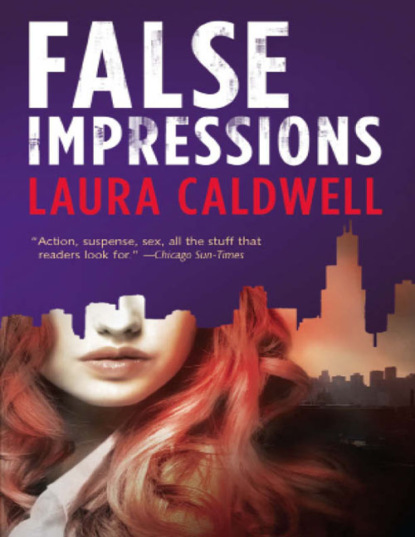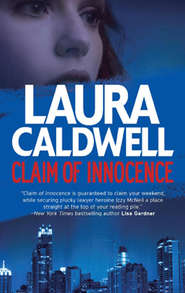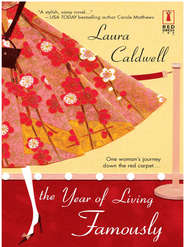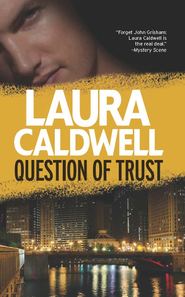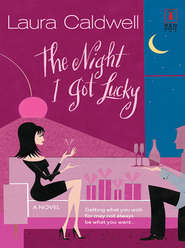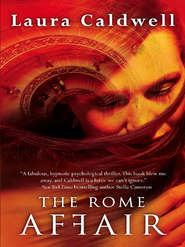По всем вопросам обращайтесь на: info@litportal.ru
(©) 2003-2024.
✖
False Impressions
Автор
Год написания книги
2018
Настройки чтения
Размер шрифта
Высота строк
Поля
“Isabel,” she said, gently interrupting me. Although I’d told her to called me Izzy, she hadn’t taken to the name. And Isabel sounded wonderful coming from her lush mouth, ripe with a purplish gloss. “Isabel, you say you do not know art. But you know love. I can tell that.”
I paused, about to ask her what she meant. But then I let the answer float up. “Yes,” I said. “I know love.”
“Well, then.” She softly grasped my upper arm. “You know art.”
I didn’t know precisely what to say. Or to think. I could only notice that even through my suit coat, I felt something electric. Or was it just what Mayburn had said about the Saga drawing energy?
We walked around the gallery some more, often in silence as Madeline gave me time to look at each piece. Sometimes, she asked my opinion (“or just your feeling”).
Once, when we reached a sculpture, she said, “An Italian designer. What do you think of it?”
The piece was about two feet tall by two feet wide, a delicate iron tree painted in a shiny black, its leaves green jewels.
“I think it’s stunning.”
She smiled, gave a single nod.
Madeline kept showing me around the gallery, and I watched as she talked about the art. As she spoke, her face seemed to acquire a peach glow and her eyes brightened. She was, I thought, an incredibly sexy woman. I could see why Mayburn had been mad for her.
But then suddenly she stopped. “May I show you something?” There was a different tone to her voice now.
“Of course.” I looked around the gallery, wondering what surprise was in store next.
But Madeline turned and began walking toward the back. She wore high, nude-colored patent heels that made only the lightest tap, tap, tap on the floor. I followed her, noticing that my own heels seemed to clump, clump, clump compared to hers.
The space behind the gallery, like that in front, had high ceilings and white walls. But where the front had been spacious, back here it was tidily packed. Slotted shelves held framed paintings and stretched canvases. Undisplayed, the artworks seemed diminished, whereas out front the art was allowed to breathe, to be surrounded by space and light, letting it shine, letting its viewer see it in many different ways.
In front, the sculptures might sit atop a pedestal, as the jeweled tree had done, lit perfectly. Here, a small sculpture made of bronze bricks sat on a file cabinet. Another sculpture was on top of the refrigerator.
Off to the side was a small office. On a table in the center of the room was a white laptop. We sat and Madeline pulled her chair close to mine, her laptop in front of us. She pulled up a website.
“It’s your gallery site,” I said.
“Yes,” Madeline said. “I have photos of nearly all our artwork on the site. I like to make it as interactive as possible. One of the features is the ability to comment freely on any piece of art.”
She clicked to a page of tiny images, all showing various artwork. She clicked on one—gray on a white canvas, depicting four sketches of some urban landscape, the whole thing glossed to a high sheen.
“It’s a very interesting piece by Sir Arthur Dudlin,” Madeline said. “I can tell you more about it later. But this is what I want to show you. The comments I received.”
I read the first one—something about the artist getting older but not better.
I stopped reading and looked at Madeline. “Do you have approval on the comments, so you can authorize them before they appear?’
She shook her head. “I despise censorship. I feel with deep conviction that response to art is as important as the art itself.”
Madeline showed me the next comment. Dudlin not only aged at the end of his life…. Check your Dudlin if you have one. Especially if you bought it from this gallery.
I stopped reading and pointed at the sentence about checking a Dudlin artwork. “Is this the first indication you had that something might have been forged?”
“The first public one,” Madeline said, her voice thin. “But it’s the last few lines that disturb me most.”
I looked at the last two lines. Madeline Saga makes everything she touches rotten. She obliterates.
“Obliterates,” Madeline said. “Obliterates. I don’t understand that. I try to bring things to life. I bring art to the world.”
“Do you have any idea what they mean in context with you?”
“No.” She sounded bereft. I wanted to comfort her, but I had no idea how one would do that with Madeline Saga.
I looked at the comment again, then at Madeline. “I think it’s time to enable your approval settings on these comments.”
Madeline’s face was distressed.
“Let me run it by Mayburn.” I texted him what I wanted to do, and he agreed.
But Madeline didn’t move when I told her that.
“Do you want me to handle it?” I asked.
Finally, Madeline nodded, gave me her passwords and watched in silence as I adjusted the controls of her website comment section and deleted those about the Dudlin.
I was just about done when the sound of a bell startled me.
“That’s the front door,” Madeline said softly. But she still gazed at the space on the screen where the comments had been; she was staring into it as if it were a long tunnel, one where she could somehow see many things. And those things—whatever they were—were deeply disturbing to her.
“Let me go see who it is,” I said, since Madeline wasn’t moving. I was glad to have something official to do for my new job.
She looked at me. “Thank you,” she said earnestly, as if someone hadn’t helped her with anything for a long time. “But no, I’ll come with you. And Isabel, I don’t mean to be difficult but…Mayburn has suggested that you’ve had a lively few years.”
I looked at her, unsure where she was going with this.
“I was wondering if we could give you an alias. Perhaps we call you Isabel or Izzy Smith. I wouldn’t want anyone to search you on the internet and find out you’re really a lawyer and not an art dealer. It might raise more questions than I can answer right now.”
“Of course. I should have already thought of that.” I stood and began to follow her out the door.
But, one more time, she looked back to the computer screen, and somehow I could tell that she was pondering that one word—obliterates.
5
As I reached the front of the gallery, I felt the Chicago wind curling inside.
I wrapped my arms around myself instinctively but I noticed that Madeline did the opposite. She faced the door, arms at her sides, her body somehow moving outward, stretching to its limits as if opening itself to whatever those winds brought.
A woman had stepped inside. “Lina!” she called.
The woman wore a peach-orange coat that looked like soft cashmere and an ivory scarf that surrounded her face. She was one of those women, like my mom’s friend Cassandra, whose age was impossible to tell—forty-five? Or a well-preserved sixty? She was lovely and elegant, her face smooth, so either seemed possible.
Madeline introduced her to me. “Jacqueline Stoddard,” Madeline said. “This is my new gallery assistant, Isabel.”





